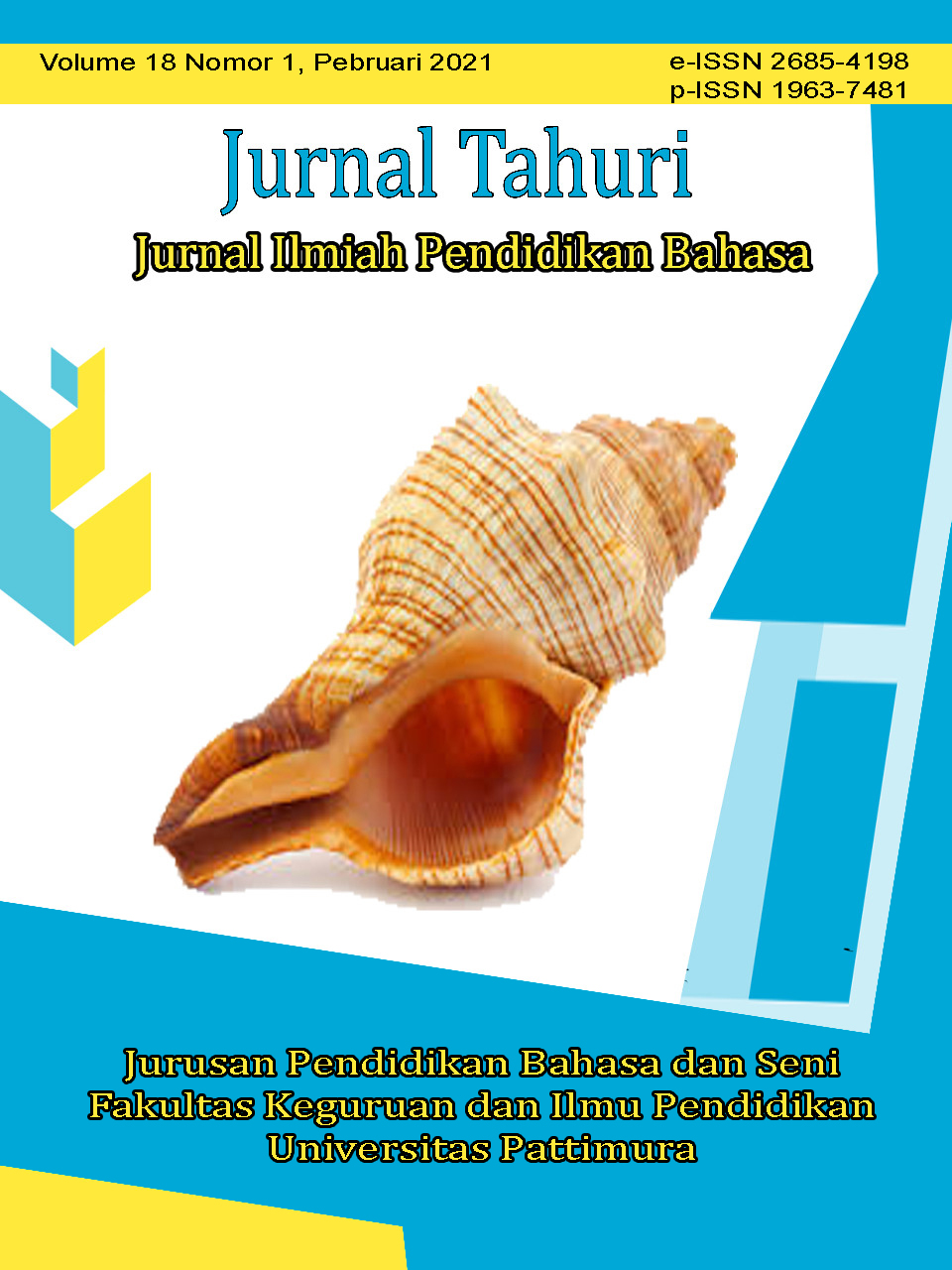COMPARATIVE STUDY ON DISCOURSE ANALYSIS BASED ON SCHOOL’S SLOGAN
Abstract
The research was aimed to describe and to analyze the meanings of each slogan used in schools. To conduct the research, the researchers used descriptive qualitative method. The subjects of this research were the slogans from 4 different schools were SMP 19, SMK 2, SMK 6 and SMK 7 in Ambon city. The data was taken in the form of phrase, clause and sentence. In collecting the data, the researchers used a documentation technique by taking the pictures of the schools’ slogans from those schools above. To analyze the meaning of each slogan, the researchers used pragmatic analysis especially speech act theory. The result showed that there were 5 types of slogan which applied into 14 slogans. From the total number of schools’ slogans, 7 slogans were written in English and 7 slogans too were written in Bahasa Indonesia. 5 slogans contained representative meaning, 5 slogans contained directive meaning, 2 slogans contained commissive meaning, 1 slogan contained expressive meaning and 1 last slogan contained declarative meaning. Types of slogan that most used in the schools were representative and directive meanings
Downloads
References
Masela, Natalia. 2016. Comparative Study on Discourse Analysis in School Slogan. Ambon: Pattimura University
Moloeng, Lexy. 1989. Metodology penelitian Kualitatif. Jakarta: Depdikbud.
In A PRAGMATIC ANALYSIS OF SLOGAN USED IN CAR ADVERTISEMENT by ASHAR WASKITO INDERAGIRI
http://www.findameaning.info/latin-mottos/school-mottos.htm retrieved in 29 Juni
http://www.teentruth.net/school-slogans-school-culture/ retrieved in 30 Juni
https://www.iep.utm.edu/austin/ retrieved in 30 Juni
https://www.researchgate.net/publication/283081784_The_Language_Outside_and_Inside_the_Foreign_Language_Classroom_Speech_Act_Theory_and_Discourse_Analysis retrieved in 30 Juni
http://lppbi-fiba.blogspot.com/2009/10/speech-act-theory-as-approach-to.html retrieved in 1 July
http://www.dictionary.com/browse/speech-act retrieved in 1 July




